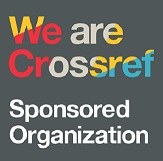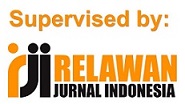AKTIVITAS PEMBELAJARAN MENDALAM BERBASIS BUDAYA BATAK TOBA DAN PEMBELAJARAN BERDIFERENSIASI UNTUK MENINGKATKAN KEMAMPUAN BERPIKIR TINGKAT TINGGI SISWA SMP
Abstract
Keywords
Full Text:
PDF (Bahasa Indonesia)References
Anwar, M.K. (2017). Pembelajaran Mendalam untuk Membentuk Karakter Siswa sebagai Pembelajar. Tadris: Jurnal Keguruan dan Ilmu Tarbiyah, 2 (2), 97 – 104.
Anderson, L. W., & Krathwohl, D. R. (2001). A Taxonomy for Learning, Teaching, and Assessing: A Revision of Bloom’s Taxonomy of Educational Objectives. Longman
Biggs, J. and Tang, C. (2011). Teaching for Quality Learning at University. New York, NY: McGrawHill Education.
Brookhart, S. M. (2010). How to Assess Higher-Order Thinking Skills in Your Classroom. ASCD.
Imelda, I., & Anzelina, D. (2018). Students’ Activities in Learning with Problem Based Learning based Module to Enhance Students’ HOTS on the Subject of Straightline Equations. Budapest International Research and Critics in Linguistics and Education (BirLE) Journal. 2019 Nov 7; 2(4): 552-9.
Kementrian Pendidikan Dasar dan Menengah. (2025). Pembelajaran Mendalam Transformasi Pembelajaran menuju Pendidikan Bermutu untuk Semua. Pusat Kurikulum dan Pembelajaran.
Mutawadia, Jawil, Farisi, S.A. (2023). Penerapan Metode Pembelajaran Sebagai Upaya Pembentukan Karakter Siswa. Journal of Instructional and Development Researches, 3 (6); 279 – 284.
Mustaghfirin, U.A., Zaman, B. (2025). Tinjauan Pendekatan Pembelajaran Mendalam Kemdikdasmen Perspektif Pendidikan Islam, Journal of Instructional and Development Researches, 5 (1).
Rlisya, I.P., Fonna, M., Listiana, Y. (2022). Analisis Soal-soal Tipe HOTS Tingkat SMP untuk Mendukung Kemampuan Penalaran Matematis Siswa. Ar-Riyadhiyyat: Jurnal Pendidikan Matematika, 2 (2); 64 – 71.
Simanjuntak SD., Imelda I. (2018). Student’s Difficulty Analysis Through Realistic Mathematics Education Using Batak Toba Cultures. International Journal of Trends in Mathematics Education Research. 1(3); 87 – 91.
Sugiyono. (2019). Metode Penelitian Dan Pengembangan Research Dan Development. Bandung: Alfabeta
Tomlinson, C. A. 2014. The Differentiated Classroom: Responding to the Needs of All Learners (2nd ed.). Alexandria: ASCD.
Viniasari, H., Susilowati, E., Mulyani, B. (2022). Implementasi Penilaian Higher Order Thinking Skills (HOTS) dalam pembelajaran Kimia di SMA Negeri 1 Magelang, Jurnal Pendidikan Kimia, 11 (2), 161-167.
Zendrato, J. (2025). Pendekatan Pembelajaran Mendalam: Studi ksus di Fakultas Pendidikan di Tangerang, Indonesia. Polyglot: jurnal Ilmiah, 21 (1), 180 – 199.
Zohar, A., & Dori, Y. J. (2003). Higher Order Thinking Skills and Low-Achieving Students: Are They Mutually Exclusive? The Journal of the Learning Sciences, 12(2), 145–181.
DOI: https://doi.org/10.30743/mes.v11i1.12084
Refbacks
- There are currently no refbacks.

.png)


